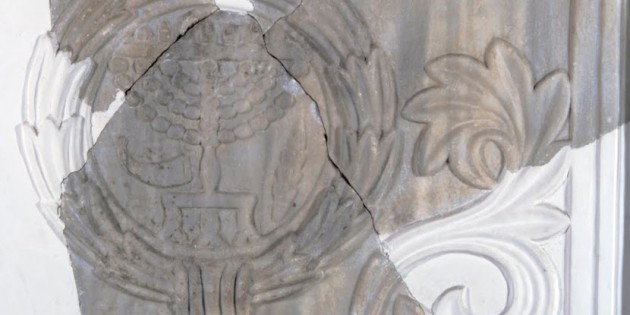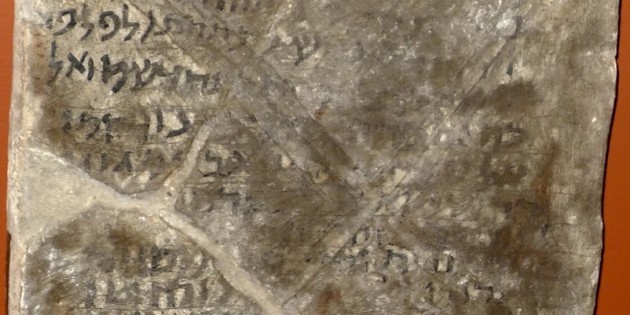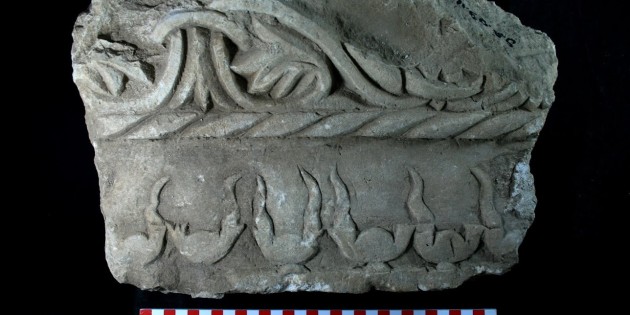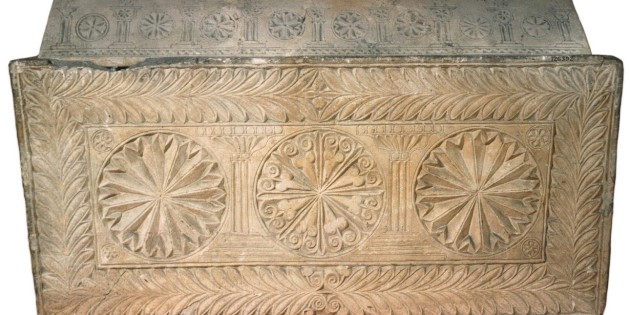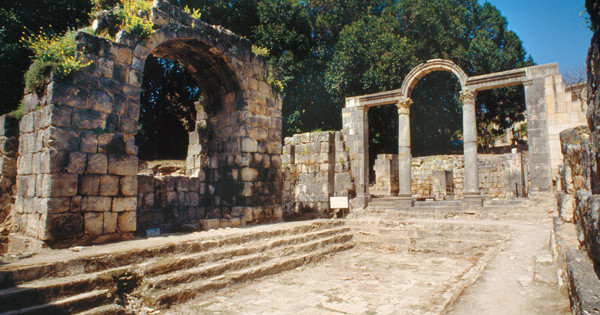Home » Greco-Roman Period » Talmud and Daily Life
Talmud and Daily Life
Joan Branham has suggested that the synagogue “chancel screen” was related to the fence that surrounded the Temple of Jerusalem, beyond which gentiles were forbidden to enter. This relationship is in part linguistic, as the same word is used for the Temple partition and that of the synagogue in modern Hebrew. In Middot 2:3 this […]
In basilical synagogues, which date to the late fifth and sixth centuries, “chancel screens” served to enclose an often broad bema that stood before an apse on the Jerusalem-aligned wall. Within the apse stood the Torah shrine, and in some, one or more large stone or metal menorahs. Chancel screens have been uncovered in apsidal basilicas […]
Tiles from the period of the Talmud, using the Aramaic language. Ceiling tile “B,” with a dedicatory inscription in Aramaic, Dura Europos Synagogue.
This is a menorah fragment from a marble frieze, Andriake, Asia Minor. A recently discovered fragment of a marble frieze from Andriake, the ancient port of Myra on the southern coast of Asia Minor, seems to represent a similar arrangement of lamps aligned toward the central lamp of a menorah. Formally, this is a natural way […]
Ossuary, Jerusalem area, first century. An ossuary is a chest, box, building, well, or site made to serve as the final resting place of human skeletal remains. They are frequently used where burial space is scarce. The body is first buried in a temporary grave, then after some years, the skeletal remains are removed and […]
Jason, a High Priest in the Temple in Jerusalem, was from the Onied Family and lived between 175-172 BCE. The people who wrote about Jason lived around 300 BCE. The exhumation of bones and their placement in charnel piles was the norm. The best example of this practice is the tomb of Jason in western […]
Excerpted from Lawrence H. Schiffman, From Text to Tradition, Ktav Publishing House, Hoboken, NJ, 1991. The rabbis sought to sanctify all of man’s actions, even the most mundane. Accordingly, it was expected that such matters as personal hygiene and dress would come under the halakhah as well as matters usually understood as “religious” in the modern sense. […]
From Text to Tradition The Daily Life of the Jew Sanctuaries in Time The Sanctified Table Marriage and the Family Ritual Purity and Impurity Life Cycle Historical surveys Isaiah M. Gafni. “The World of the Talmud- From the Mishnah to the Arab Conquest.” Part III. Christianity and Rabbinic Judaism- a Parallel History of their Origins […]
This is the Study House of Rabbi Eliezer ha-Qappar. –A Hebrew Inscription from Dabbura in the Golan Heights. Sometime in the fourth or perhaps fifth century, a Hebrew inscription was carved into a large basalt door lintel in a very small village that we now call Dabbura, in the Golan Heights. The inscription was set […]
Overview- The Talmud and Daily Life in the Age of the Rabbis (circa 200-7th Century CE) The Amoraim (220-500 CE) The Talmud (3rd-7th century CE) Liturgy, Lore, Mysticism and Magic (3rd-7th century CE) Daily Life Culture of the Rabbis (3rd-7th century CE)


